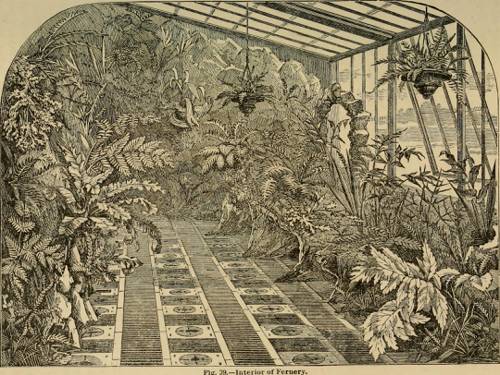
FAQ About Indoor Plant Restoration After Environmental Damage

What are common signs of environmental stress in indoor plants?
Common signs of environmental stress in indoor plants include wilting, discoloration of leaves, brown leaf tips, stunted growth, and leaf drop. In some cases, plants may show signs of pests or disease, as stressed plants are more susceptible to infestations and infections.

How can frost damage affect indoor plants?
Frost damage can cause cellular disruptions in indoor plants, leading to wilted leaves, blackened foliage, or soft and mushy stems. Frost-sensitive plants may show visible damage quite quickly after exposure to cold temperatures.

How should I revive indoor plants affected by heat stress?
To revive heat-stressed indoor plants, move them to a cooler location away from direct sunlight, increase humidity by misting the leaves, and ensure the soil is adequately moist, but not waterlogged. Providing some shade and good air circulation can also help.

What steps can be taken to restore plants suffering from excessive watering?
If a plant is suffering from overwatering, first remove it from its pot to check the roots. Trim any roots that are mushy or rotten. Re-pot the plant in fresh, well-draining soil and ensure future watering is done only when the top inch of soil is dry. Adjusting watering frequency can prevent recurrence.

How can inadequate light affect indoor plants and how to rectify this?
Inadequate light leads to leggy growth, small and pale leaves, and poor flowering. To rectify this, move the plant closer to a light source, consider using grow lights, or clean the windows to maximize natural light exposure.

What are the consequences of neglecting indoor plants and how can they be remedied?
Neglect can lead to symptoms like dry soil, leaf drop, and stunted growth. To remedy neglect, establish a watering and feeding schedule, prune dead or damaged parts, and repot if the soil has become compacted and nutrient-depleted.

Can feeding help in reviving stressed indoor plants?
Feeding can help stressed plants, but it should be done cautiously. Use a diluted, balanced fertilizer to provide nutrients without overwhelming the plant. Ensure to feed only during the plant's active growing seasons unless specified otherwise for certain varieties.

How can I prevent environmental stress in indoor plants?
Prevent environmental stress by maintaining consistent growing conditions suited to each plant's needs—this includes adequate lighting, proper watering, and humidity levels as well as protecting plants from drafts or sudden temperature changes.

Why is it important to repot indoor plants after they've been stressed?
Repotting stressed plants helps refresh the soil and remove compacted conditions that may be preventing root growth. It provides the plant with new nutrients and can prevent further stress from space and nutrient constraints.

What role does humidity play in indoor plant health and recovery?
Humidity is crucial for many tropical and subtropical indoor plants, which thrive in high-humidity environments. Inadequate humidity can lead to brown leaf edges and poor growth. Increasing humidity can often aid recovery in stress-affected plants by misting, using a humidity tray, or a humidifier.

When should you prune damaged parts of a stressed plant?
Prune damaged parts when they are clearly dead or diseased to prevent the rest of the plant from being affected. However, avoid excessive pruning if the plant is severely stressed as it needs foliage for photosynthesis; instead, focus on essential pruning.

How can accidental neglect impact indoor plants?
Accidental neglect, such as forgetting to water or over-exposing the plant to sun, can cause dehydration, sunburn, and nutrient deficiency. Regularly checking plants and maintaining a consistent care schedule can mitigate these impacts.

How quickly can indoor plants recover from environmental stress?
Recovery time varies depending on the type of stress and the plant species. Some may recover in a few weeks, while others might take several months or may not fully recover if the damage was extensive.

Can indoor plants recover from being frozen?
Recovery from freezing depends on the plant and the extent of the damage. Tender plants with soft tissue may not recover, while hardy varieties might regrow from healthy roots. Trim the damaged parts and keep the plant in a warm, consistent environment.

What are the effects of poor air circulation on indoor plants?
Poor air circulation can lead to mold growth, pest infestations, and weakened structures in indoor plants. Proper air circulation aids in transpiration and prevents the stagnancy that can promote disease.

How can you use grow lights to support indoor plant recovery?
Grow lights can provide supplemental lighting to boost photosynthesis, especially in low-light conditions or during darker months. Position the lights above the plant and adhere to the recommended light exposure duration for the specific plant species.

What role does proper watering play in plant recovery?
Proper watering is vital in plant recovery, as both overwatering and under-watering can cause stress. Ensure that plants are watered according to their specific requirements, typically when the top inch or two of the soil is dry, to maintain balanced moisture.

Can I use household remedies to help restore my indoor plants?
Some household remedies, like diluted neem oil sprays for pests or a small amount of vinegar to adjust soil pH, can be helpful. However, ensure they are safe for the specific plant, and monitor the plant's response carefully.

Are there specific indoor plant types that are more resilient to environmental stress?
Indeed, some indoor plants are more resilient, such as snake plants, pothos, and spider plants, which can tolerate a range of light and moisture levels better than more delicate species like orchids or ferns.

How does accidental over-fertilization affect plants, and how can it be corrected?
Over-fertilization can lead to salt build-up, causing leaf burn, root damage, and stunted growth. To correct it, leach the soil with clean water to wash out excess salts and withhold further fertilization until the plant stabilizes.
